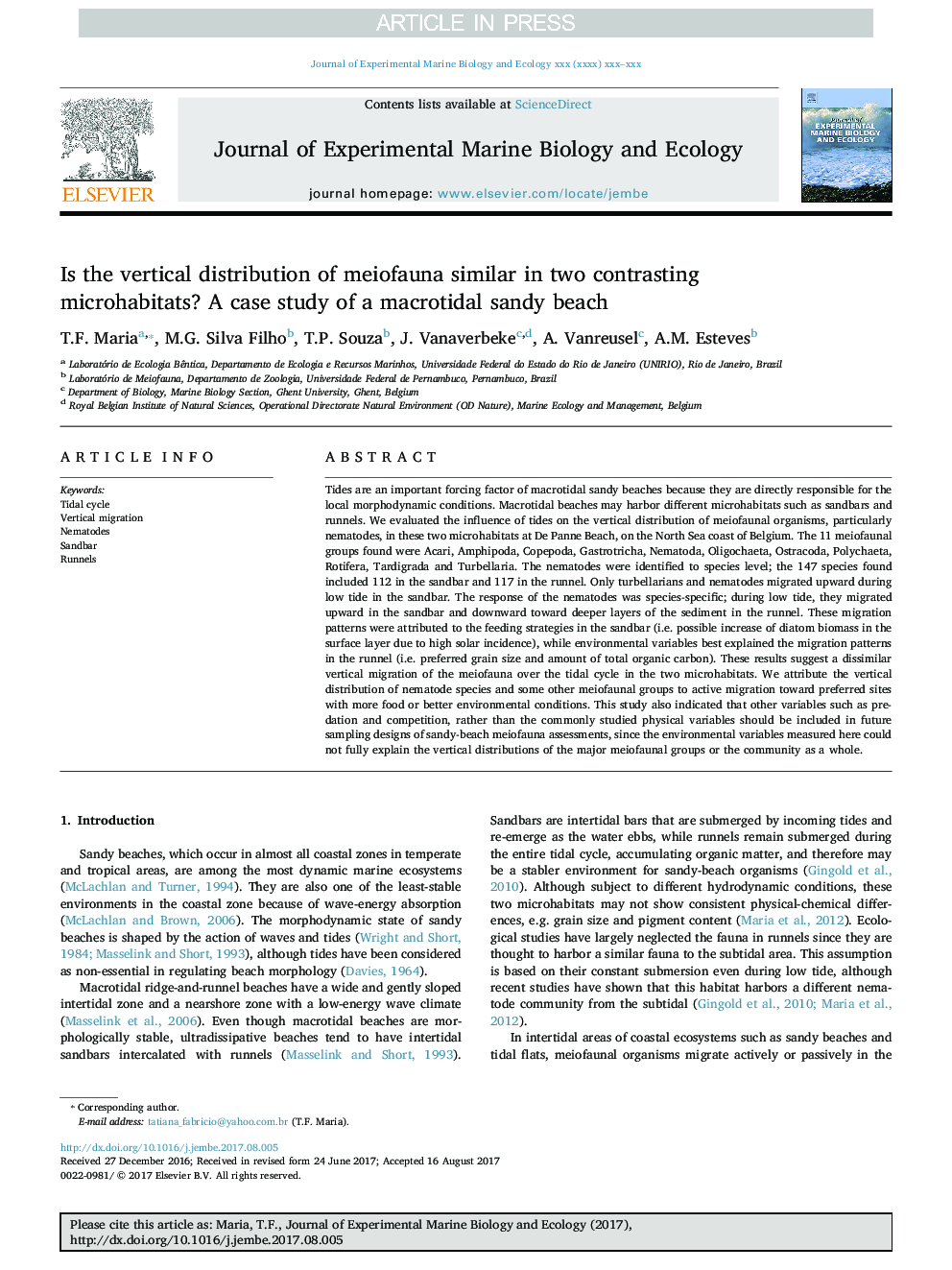| Article ID | Journal | Published Year | Pages | File Type |
|---|---|---|---|---|
| 8848948 | Journal of Experimental Marine Biology and Ecology | 2018 | 13 Pages |
Abstract
Tides are an important forcing factor of macrotidal sandy beaches because they are directly responsible for the local morphodynamic conditions. Macrotidal beaches may harbor different microhabitats such as sandbars and runnels. We evaluated the influence of tides on the vertical distribution of meiofaunal organisms, particularly nematodes, in these two microhabitats at De Panne Beach, on the North Sea coast of Belgium. The 11 meiofaunal groups found were Acari, Amphipoda, Copepoda, Gastrotricha, Nematoda, Oligochaeta, Ostracoda, Polychaeta, Rotifera, Tardigrada and Turbellaria. The nematodes were identified to species level; the 147 species found included 112 in the sandbar and 117 in the runnel. Only turbellarians and nematodes migrated upward during low tide in the sandbar. The response of the nematodes was species-specific; during low tide, they migrated upward in the sandbar and downward toward deeper layers of the sediment in the runnel. These migration patterns were attributed to the feeding strategies in the sandbar (i.e. possible increase of diatom biomass in the surface layer due to high solar incidence), while environmental variables best explained the migration patterns in the runnel (i.e. preferred grain size and amount of total organic carbon). These results suggest a dissimilar vertical migration of the meiofauna over the tidal cycle in the two microhabitats. We attribute the vertical distribution of nematode species and some other meiofaunal groups to active migration toward preferred sites with more food or better environmental conditions. This study also indicated that other variables such as predation and competition, rather than the commonly studied physical variables should be included in future sampling designs of sandy-beach meiofauna assessments, since the environmental variables measured here could not fully explain the vertical distributions of the major meiofaunal groups or the community as a whole.
Related Topics
Life Sciences
Agricultural and Biological Sciences
Aquatic Science
Authors
T.F. Maria, M.G. Silva Filho, T.P. Souza, J. Vanaverbeke, A. Vanreusel, A.M. Esteves,
